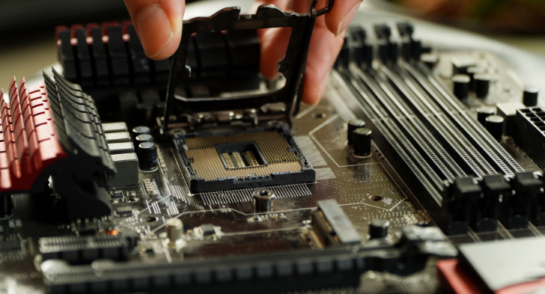Who could have imagined two years ago that people across the world would shift towards a work-from-home model (WFH), almost overnight? Most companies were caught unprepared and were forced to spend a fortune on the required equipment for remote workers. With the ongoing pandemic continuing, we are not anywhere near a full return to the offices as health and safety will continue to be a consideration in 2022.
This crisis forced many businesses to adapt to new ways of working practically overnight. A change that likely would have taken another 10 years to achieve, under normal circumstances. With the initial crisis shock phase now over, remote working is here to stay. However, organizational processes and policies are still playing catch up.
IT departments for example have been presented with a number of new challenges, especially with regards to the management of equipment and other assets (ITAM). IT teams play a vital role in overseeing security for their organizations, whilst keeping employees productive with functioning equipment and software. But the quick transition to remote working has meant the logistics surrounding onboarding and off-boarding of staff is now much more complex. Many issues arise for IT, such as:
- Getting staff on-boarded with the right equipment in time for start dates
- Security risks and data vulnerabilities
- Asset retirement
- Equipment recovery
IT are still defining remote working approaches. Afterall, equipment needs to be kept fully functional and replaced as it would in the office. This includes items like laptops, tablets, printers, phones, cables, chargers, headsets. The list goes on. But this situation poses an even bigger question: what do we do to retrieve old items when we upgrade and how do we manage the return of equipment at the end of a person’s engagement?
When permanent employees leave or temporary workers come to the end of their assignments, the company-owned inventory must be recovered. Not retrieving company issued computers and other assets is not only a significant cost, but also a security and compliance concern. Protecting the company’s intellectual property and company assets is paramount. Company assets left in the possession of ex-employees is a business risk and information must be recovered or deleted before any data is compromised.
But how to balance this when there is a need to onboard new employees quickly? Companies spend money on buying new equipment repeatedly for speed and convenience. There is an urgency to onboard new employees, especially where there is a high turnover of staff. The cost to the bottom line is huge, with finance seeing the increasing cost to the hardware IT budget.
Clearly, we need to develop innovative solutions to manage equipment retrieval. Some of the practical solutions could be to:
- Deliver pre-paid, self-addressed boxes to the terminated employee requesting the equipment to be returned
- Schedule couriers to pick up items for return
However, this is not always effective and is highly manual. IT teams often do not have reliable details of inventory items and their locations. Sourcing new talent and onboarding new workers and getting them set up fast often takes priority. Many companies also don’t have the logistics networks in place to enable an effective returns process. And as a result, the effective recovery of IT equipment is poor, and the cost to replace high.
The solution: consolidate and automate
How do we make it easy for someone to return their equipment? The answer must lie in removing the barriers and streamlining the process. Inventory data must be accurate and freely available to promote efficient returns. The approach should be:
- Start with Data: If all IT asset information were maintained under one system to provide a visual of the life cycle of the technology, it would make it easier to track software license and hardware devices regardless of location. Just as importantly where that technology is and with whom should also be part of that dataset.
- Analyze and Prioritize: Not all equipment holds equal value. A $20 headset is not as valuable as a top of the range laptop. Knowing where the valuable equipment is and who has it, can steer your team’s efforts more effectively to achieve quick wins.
- Define a smart communication strategy: An outreach or communication strategy that may even vary from one employee to the next and have several multi-channel steps, will be key to ensuring a successful return rate and efficient resource usage. Technology platforms can help here, such as tools that can define the communication plans, next best actions, and automatic responses.
- Make it easy and actionable: Asking employees to execute multiple steps to return items only increases the likelihood of failure. Make it easy and actionable. The easier it is for someone to action via ‘single click’, through an easy returns-portal for example, the more likely it is to get done.
- Measure and adapt: Setting key metrics and performance indicators for your returns-program will allow you to measure the business outcomes it’s delivering. Measuring against those metrics will allow you to spot when things are not going to plan and to do something about it.
Automated recovery systems
So, while getting the process right is the first priority, and as we have discussed basing that on data, analytics and smart communication, the most efficient equipment returns are managed using new tools and applications. These tools can automate most of the heavy lifting processes and can provide many benefits including:
- A single source of inventory data
- Accurate returns statistics
- Up-to-date information is accessible from any device
- Self-service options for the employee on a 24/7 basis
- Early identification of losses
- Improved visibility of resale and credit opportunities
As we emerge from the worst of the COVID-19 pandemic, we are learning how to manage the WFH reality and how to keep the remote workforce running efficiently with IT equipment and recovering when no longer needed. Uncertainties will continue to present workforce challenges, but with the right approach and the right technology much of this can be streamlined. But we need to stay vigilant, agile and responsive to new and changing conditions.
RELATED CONTENT


Infographic: Is anyone using AI and Machine Learning in the Service Supply Chain?




Sign up for updates
Get the latest updates on our new services and fresh content — straight to your inbox.
